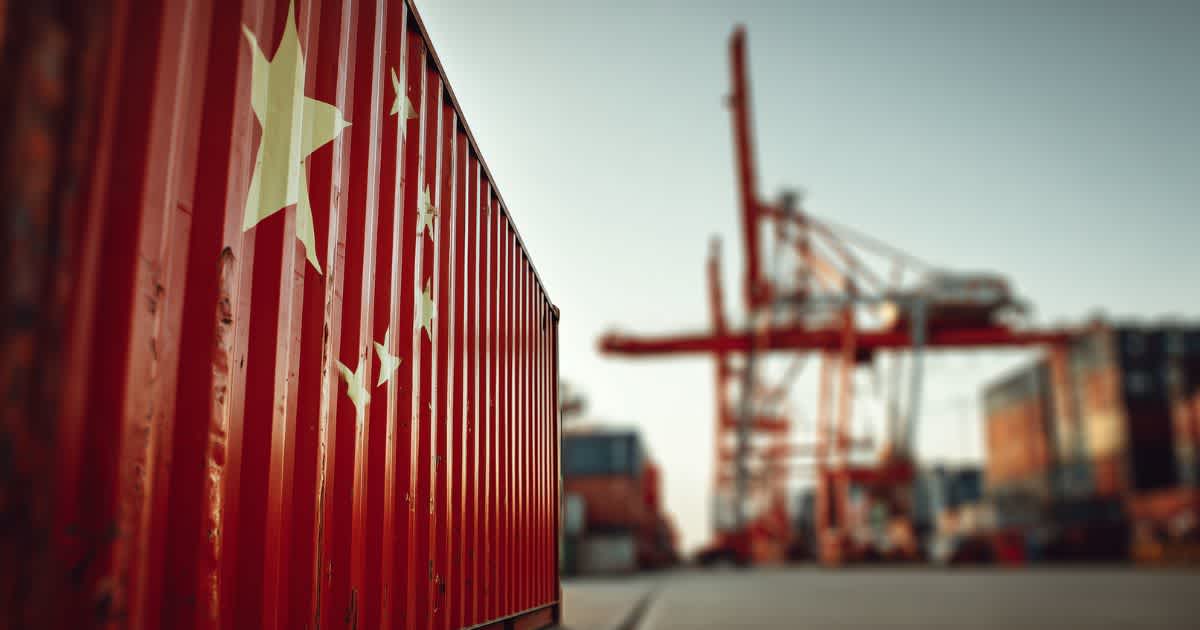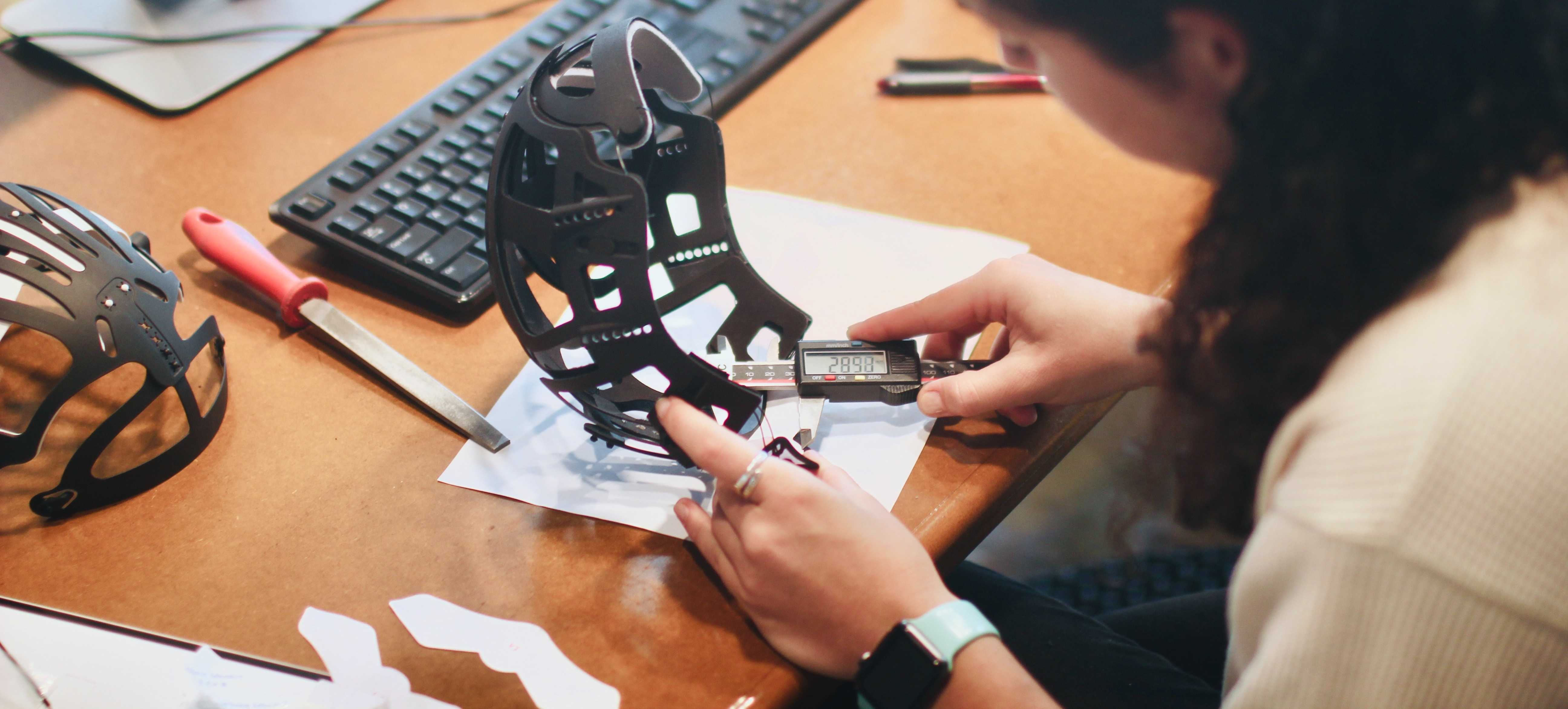Table of Contents
- Made in China 2025 - What matters today
- Overview: Why imports from China are still relevant
- Top 5 manufactured in China products in 2025
- Quality instead of clichés: How to test Chinese products properly
- Manufactured in China vs. in Germany - a comparison with a focus on 2025
- Importing Chinese products correctly - tips for companies
- Conclusion: Efficient and quality-conscious procurement
Top 5 products manufactured in China
Reading Time: 7 min.

Hardly any other country characterises global supply chains as much as China. Whether machine components, textiles or consumer goods - what is sold in Europe today in many cases originally comes from the Far East. This raises a key question for companies: Which products from China will be particularly worth importing in 2025?
In this article, you will receive a compact overview of the top 5 products manufactured in China that will be particularly relevant for import in 2025 - supplemented by practical tips for successful and legally compliant imports.
Made in China 2025 - What matters today
Anyone making strategic purchases cannot avoid the Chinese procurement market. This is not only due to attractive prices, but also increasingly due to quality, innovation density and vertical integration. The country has developed from a pure manufacturing centre into a globally competitive technology supplier, primarily thanks to the government's ‘Made in China 2025’ industrial strategy.
The economic data impressively underlines this dynamic: in the first half of 2025, China recorded exports worth around USD 1.81 trillion, which corresponds to an increase of 5.9% compared to the same period last year (source: Trading Economics). Germany remains an important trading partner: in 2024 alone, Germany imported goods worth around 156.3 billion euros from China (source: Federal Statistical Office, Destatis).
At the same time, volatile markets, geopolitical tensions and increasing demands on supply chain quality are presenting many purchasing departments with new challenges. This makes it all the more important to precisely identify potential and use imports from China in a targeted manner where they offer real added value.
Overview: Why imports from China are still relevant
Despite growing discussions about reshoring and diversification, one thing remains clear: imports from China will continue to be a central component of the procurement strategy for many companies in German-speaking countries in 2025. This is not only due to production costs, but also to a highly developed manufacturing ecosystem that combines speed, scalability and technical expertise.
In addition to traditional Chinese products such as textiles and toys, technical assemblies, furniture, packaging solutions and certain consumer goods in particular have established themselves as reliable, high-quality imported goods in recent years, including for demanding B2B applications.
Importers are also benefiting from an increasingly professional infrastructure: digital procurement tools, transparent supply chains, production audits and real-time documentation have long since become standard in many areas.
China's strategic focus is also contributing to its relevance: With programmes such as ‘Made in China 2025’, targeted investments are being made in sectors such as mechanical engineering, modern materials, energy, vehicle technology and medical technology.
Last but not least, access to reliable production partners has become easier. With the right network, cultural understanding and a local operational presence, risks can be avoided at an early stage and opportunities utilised in a targeted manner.
Top 5 manufactured in China products in 2025
Which Chinese products will importers be focussing on in 2025? The following five product groups are not only among the strongest export goods in terms of volume, but are also characterised by good availability, mature production processes and a high potential for optimisation along the supply chain.
1. machines & technical equipment
China is no longer just a producer of simple components, but also a supplier of complex technical assemblies and machines. Demand is particularly high:
Hydraulic and pneumatic components
Machining units for turning and milling applications
Industrial conveyor and packaging technology
These products are characterised by a combination of attractive prices, rapid availability and consistent quality. Particularly in the area of OEM production, Chinese suppliers score points with their flexibility, short lead times and technical implementation in line with Western standards. However, access to the relevant producers requires in-depth market knowledge, technical testing and clear specifications.
2. furniture & interior products
The furniture sector is one of the most stable product groups in the Chinese trade. In addition to classic home furniture, areas such as the following are currently gaining in importance:
Office furniture for commercial customers
Outdoor and garden furniture
System solutions for retail furnishings
Many manufacturers have now also mastered materials such as solid wood, steel, glass and recycled materials. What's more, supply chains in this segment are well established, which facilitates smooth delivery and adaptation to local standards.
3. toys & crafting products
Toy exports from China continue to grow. Particularly in demand in the B2B environment are
Educational toys for schools & daycare centres
Creative and craft sets for retailers
Seasonal promotional goods
Important: Product safety is particularly crucial in this product group. CE labelling, EN 71 certificates and REACH conformity are mandatory.
4. fashion, bags & accessories
Clothing from China was once synonymous with mass production - today it often stands for efficiently controlled series production with an increasing focus on sustainability. Suppliers are particularly active in this area:
Technical workwear
Accessories such as bags, belts and umbrellas
Licensed fashion items
For importers, the combination of design realisation, vertical integration and reliable processing is crucial here, especially in the case of a high number of variants or seasonally timed collections.
5. electronic products (components & equipment)
Although complex electronics production is increasingly taking place domestically or in neighbouring markets, China remains indispensable for many product areas, especially for:
Accessories such as cables, adapters, brackets
Passive components (capacitors, connectors)
Components for mechanical-electrical applications
For OEM-related companies, there are efficient procurement opportunities here, but only with accompanying quality control and technical testing.
Quality instead of clichés: How to test Chinese products properly
The prejudice that ‘Made in China’ is associated with qualitative uncertainties still persists in parts of the industry. However, the reality is more nuanced: Numerous Chinese manufacturers have significantly improved their production processes, quality assurance and audit standards in recent years - often on a par with European suppliers. The decisive factor is how they test, document and communicate.
For importers, this means that those who adopt a structured approach can now achieve consistently high quality with suppliers from China. The following audit approaches have proven their worth:
preliminary inspection: technical specification & sampling
test reports and certificates
on-site inspections and audits
incoming goods inspections & series monitoring
communication & documentation
Manufactured in China vs. in Germany - a comparison with a focus on 2025
A product's designation of origin remains a strong signal, both in the B2B and end customer environment. While “Made in Germany” traditionally stands for precision, compliance with standards and innovative strength, “'Made in China” has long since shed its former cheap image. Today, the two labels of origin no longer stand in opposition to each other, but in many cases complement each other strategically.
You can find a comprehensive comparison of the two quality labels in the blog article: Made in China vs. Made in Germany.
Importing Chinese products correctly - tips for companies
Importing products from China offers numerous opportunities - but also harbours typical pitfalls. A structured approach is essential, especially in complex supply chains with technical products, changing availability and increasing documentation and compliance requirements. The following points will help companies to successfully implement imports.
1. supplier selection: trust is the key
A favourable price alone is not enough. The decisive factor is whether a supplier can deliver reliably, communicate clearly and also fulfil requirements in the long term. When selecting a supplier, look out for:
Verifiable certifications (e.g. ISO 9001)
Technical equipment & vertical range of manufacture
References in the target market
Reaction behaviour in the event of queries or improvements
A well-founded pre-selection through personal audits or through locally anchored partners with market knowledge significantly reduces risks right from the start.
2. logistics: between costs, time and control
Choosing the right Incoterm is often decisive for profitability and delivery performance. The following are common:
FOB (Free on Board): Buyer assumes transport from the port of shipment
CIF (Cost, Insurance, Freight): Seller organises transport to port of destination
While FOB offers more control, CIF reduces the coordination effort, but often with limited transparency. In addition, transit times average 30-45 days by sea freight, alternatively 15-20 days by rail (China-Germany corridor). Professional supply chain management helps to manage customs requirements, dispatch planning and import processing with foresight.
3. integrate test processes and documentation
Anyone importing from China must ensure that the products meet the requirements of the target market. This includes
CE labelling and declaration of conformity
Acceptance test certificates (e.g. 3.1 according to EN 10204)
Material and functional tests according to AQL standards
It is important not to anchor these steps at the end of the chain, but to plan for them right from the start of the project, e.g. via release samples, test plans and defined communication channels.
4. collaboration with a full-service partner
For many companies, it is not worth tackling the operational complexity of China sourcing alone. Experienced trading partners with:
their own team in China
professionally trained staff in Europe
and digital interfaces to the supply chain
can not only minimise risks, but also actively contribute to value creation, for example through targeted supplier development, efficient quality processes or transparent real-time overviews.
We at Line Up have been supporting industrial and commercial companies for over 30 years as a full-service partner for global procurement - from the product idea to supplier qualification and on-time delivery. Our own presence in China and our technical expertise in purchasing enable us to implement complex requirements precisely and reliably - regardless of industry, quantity or target market.
Conclusion: Efficient and quality-conscious procurement
In 2025, international procurement will be influenced by global challenges more than ever before. From geopolitical tensions and increasing regulatory requirements to growing expectations of sustainability and transparency. Imports from China are not only relevant, but also make strategic sense in many product groups. Provided they are structured, quality-assured and far-sighted.
Analysing the five most important Chinese products shows that it is no longer a question of simple mass-produced goods. Instead, the Chinese market today offers a wide range of mature, industrially tested products with high optimisation potential - from machine components to design-oriented pieces of furniture.
It is not just a question of the most favourable price, but of reliability, communication and precise implementation along the entire supply chain. Companies that rely on experienced full-service partners benefit from clear structures, minimised risk and efficient use of resources.
Line Up sees itself not only as a link between Europe and Asia, but also as an integrated solution provider for modern procurement: with technical expertise, intercultural understanding, its own presence in China and digital tools for real-time management of complex supply chains. Our aim is to supply you with exactly the product you need - in the required quality, at the optimum time and on fair terms. This is how we create the basis for successful trade relations together.
Get a no-obligation consultation now
Are you planning to import from China or would you like to organise your supply chain professionally? Arrange an appointment now
Newsletter Registration
Sign up now for our free Line Up newsletter and stay up to date.





